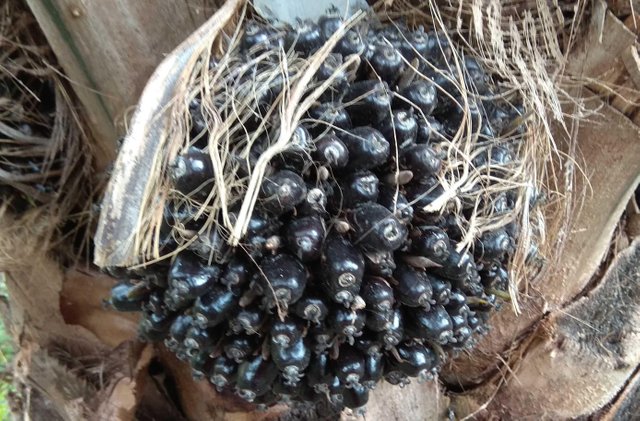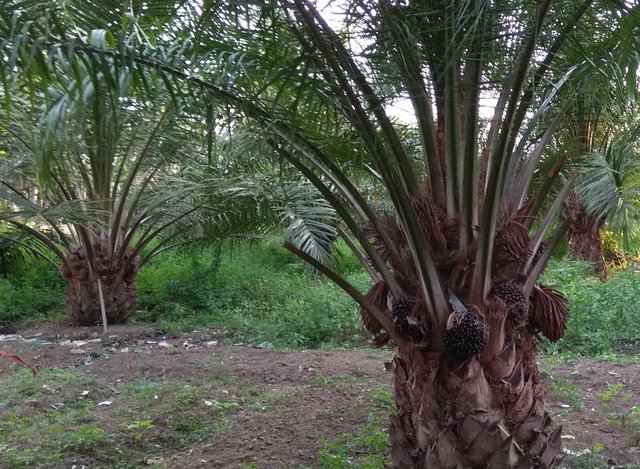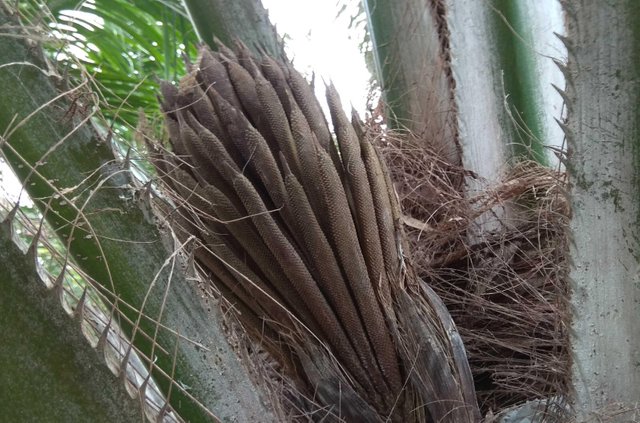Oil palm from aceh

Oil palm (Elaeis) is an important industrial plant producing cooking oil, industrial oil, and fuel (biodiesel). Its plantations generate huge profits so that many old forests and plantations are converted into oil palm plantations. Indonesia is the world's largest producer of palm oil. In Indonesia its distribution in Aceh, east coast of Sumatra, Java, Kalimantan, and Sulawesi. Palm fruits have varied colors from black, purple, to red depending on the seed used. Fruit clustered in bunches that emerged from each lug. Oil is produced by the fruit. The oil content increases with fruit maturity. After passing through the mature phase, free fatty acid content (FFA, free fatty acid) will increase and the fruit will fall off by itself.
Palm oil is used as raw material for cooking oil, margarine, soap, cosmetics, steel industry, wire, radio, leather and pharmaceutical industries. Palm oil can be used for such diverse purposes because of its superior properties of high-pressure oxidation resistant, capable of dissolving chemicals insoluble by other solvents, has high coating power and does not cause irritation to the body in the cosmetic field.
The most popular part to be processed from oil palm is fruit. The meat section produces crude palm oil that is processed into raw material of cooking oil and various types of derivatives. Excess vegetable oil from palm is cheap, low cholesterol, and has high carotene content. Palm oil is also processed into margarine raw material.
Core oil becomes the raw material of alcohol oil and cosmetics industry. Flowers and fruit in the form of bunches, branched a lot. The fruit is small, when cooked red-black. The flesh is solid. The flesh and the skin of the fruit contain oil. The oil is used as an ingredient of cooking oil, soap, and candles. The waste is used to feed livestock. A batch called palm kernel cake is used as one of the ingredients for making chicken food. The shell is used as fuel and charcoal.
The fruit is processed by making soft piece of flesh with temperature 90 ° C. The softened meat is forced to part with the core and shell by pressing on a hollow cylinder machine. The core meat and shell are separated by heating and pressing techniques. Once it is poured into the mud so that the remaining shells will descend to the bottom of the mud.
The remaining processing of palm fruit is very potential to be a mixture of fodder and fermented into compost.

The original habitat is the bush area. Palm can grow well in the tropics (15 ° N - 15 ° LS). This plant grows perfectly at an altitude of 0-500 m above sea level with 80-90% moisture. Palm needs a climate with stable rainfall, 2000-2500 mm a year, ie areas that are not inundated when it rains and not drought during drought. Annual rainfall pattern influences flowering and palm fruit production behavior

Nice post
Posted using Partiko Android
Congratulations @fauzi86! You received a personal award!
You can view your badges on your Steem Board and compare to others on the Steem Ranking
Vote for @Steemitboard as a witness to get one more award and increased upvotes!